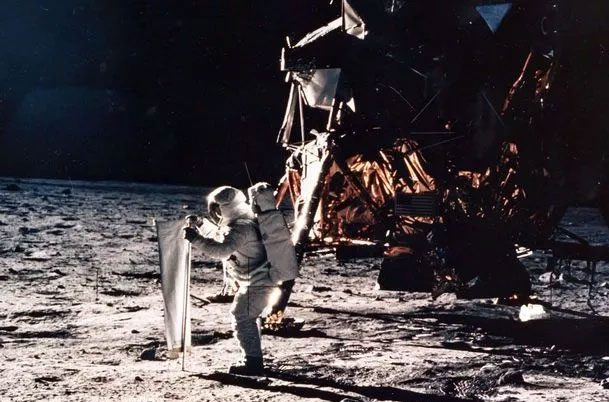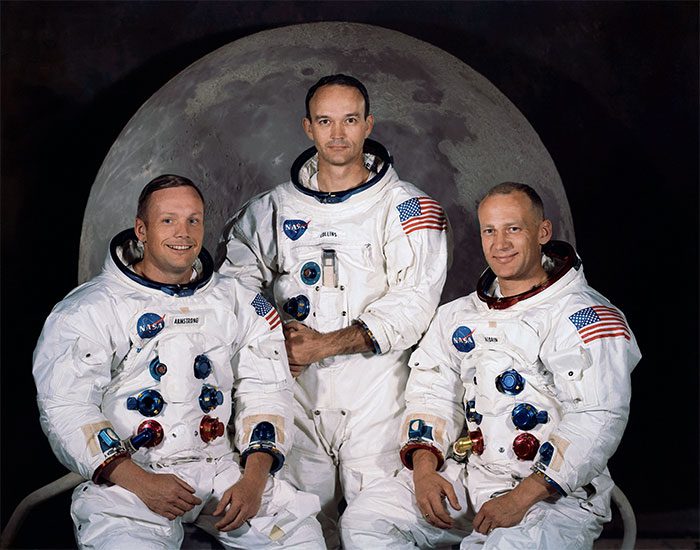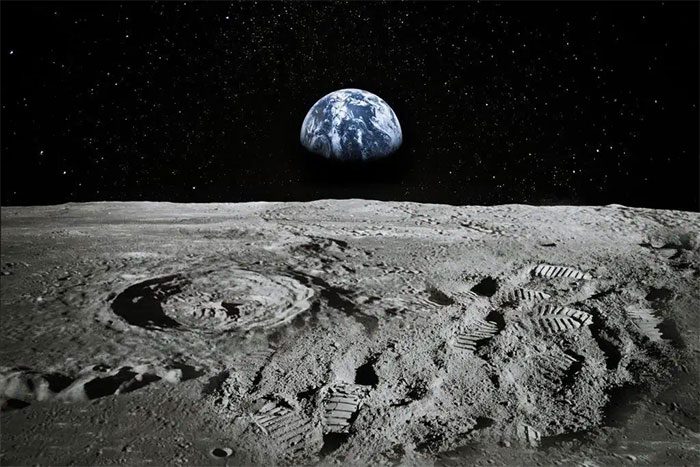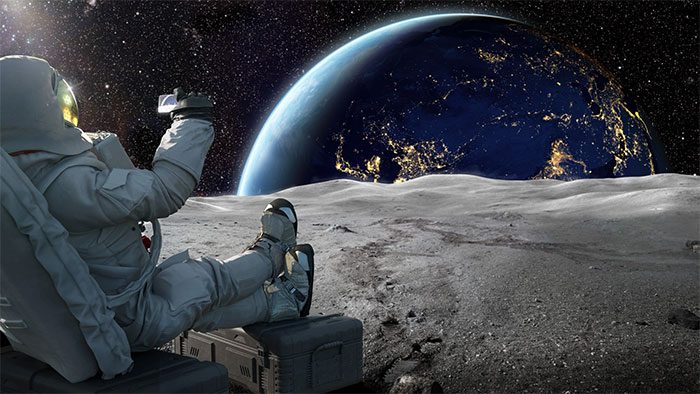The Moon – the only natural satellite of Earth, has always attracted human interest and exploration from ancient times to the present day.
Since American astronauts Neil Armstrong, Buzz Aldrin, and Michael Collins became the first humans to set foot on the Moon on July 20, 1969, humanity has continued to embark on numerous missions to the Moon for research, sample collection, and more.

Neil Armstrong was the first to leave footprints on the Moon in 1969. (Photo: NASA).
World powers have developed spacecraft to land and find ways to send humans back to the Moon. So why does humanity continue to seek to explore the Moon? What is so captivating about this small sphere, the only natural satellite of Earth?
Below are a few explanations for this question.
The Race to Assert Political Dominance
On October 4, 1957, the Soviet Union became the first country to launch an artificial satellite into space. On April 12, 1961, the Soviet Union achieved another monumental milestone by becoming the first nation to send a human into space. Astronaut Yuri Gagarin was the first to fly into space aboard Vostok 1.

In April 1961, Yuri Gagarin was the first to fly into space. (Photo: Getty).
On February 3, 1966, the Soviet Union achieved another milestone in space exploration when the unmanned spacecraft Luna 9 became the first artificial object to successfully land on the Moon.
The United States, the adversarial power to the Soviet Union at the time, did not want to fall behind. On July 29, 1958, the National Aeronautics and Space Administration (NASA) was established, aiming to help the U.S. compete with the Soviet Union in the space race.
Having fallen behind the Soviet Union in launching satellites and sending humans into space, NASA set the goal of landing Americans on the Moon before the Soviets. After numerous failed attempts, including serious disasters, in July 1969, Apollo 11 successfully landed on the Moon, allowing three American astronauts to leave the first footprints on its surface.

The crew of Apollo 11, from left to right: Neil Armstrong, Michael Collins, and Buzz Aldrin (Photo: NASA).
Since that time, space powers have viewed the Moon as a target to showcase their technological prowess and capability in space exploration.
As of now, five countries have successfully landed spacecraft on the Moon, including the Soviet Union (Luna 9 in 1966), the United States (Surveyor 1 in June 1966), China (Chang’e 3, landing in December 2013), India (Chandrayaan 3, landing in August 2023), and Japan (SLIM, landing in January 2024).
The Moon as a Potential “Way Station” for Further Space Exploration
In addition to political motivations, exploring and studying the Moon also allows scientists to gain a deeper understanding of Earth’s only natural satellite, helping to answer questions such as “How was the Moon formed?”; “What are its surface components?”; “What does Earth look like from the Moon?”…
During the Apollo 12 mission to explore the Moon in November 1969, astronauts brought back soil and rock samples from the Moon. Subsequent Apollo missions returned a total of 382 kg of material from the Moon to Earth.

The Moon could become an important “way station” in human space exploration. (Photo: Pinterest).
The study of lunar samples has helped scientists determine how the crust formed, as well as identify the objects that impacted the Moon…
Samples collected by NASA’s two robots, Clementine and Lunar Prospector, during the Moon exploration missions in 1990 showed signs that water once existed there.
Where there is water, there is life, or at least the potential for sustaining life for a time. Water is composed of hydrogen and oxygen (H2O), leading scientists to believe it may be possible to extract water on the Moon to obtain hydrogen for fueling spacecraft and oxygen for astronauts.
This allows the Moon to become a “way station” for spacecraft before embarking on further journeys to the rest of the solar system.
Moon Exploration for Tourism Purposes
Aerospace companies such as SpaceX and Blue Moon have undertaken flights to take tourists into space, with ticket prices reaching millions of dollars.
Imagine if tourist flights to the Moon were possible; the revenue that these aerospace companies could generate would be enormous. However, to conduct such flights, SpaceX and Blue Moon would need to invest billions of dollars in research and testing to ensure safe human travel to the Moon.

Will the Moon become a favorite tourist destination for the world’s billionaires? (Photo: Getty).
If testing is successful, the Moon will surely be an enticing travel destination for billionaires, as ordinary tourist spots on Earth no longer hold their appeal.
Why Haven’t Humans Returned to the Moon?
The last time humans set foot on the Moon was in December 1972, when the Apollo 17 spacecraft brought three American astronauts, Eugene Cernan, Harrison Schmitt, and Ronald Evans, to the lunar surface.
It has been over half a century since humans last stepped on the Moon. Why have no humans returned to this place, despite the fact that technological advancements have significantly progressed compared to 50 years ago?
One reason is that governments are no longer as eager to compete in the race to send humans to the Moon. Instead, they prefer to send unmanned spacecraft to explore the Moon, which is more cost-effective and safer.
Furthermore, the safety standards for manned space missions have become increasingly stringent, making it difficult to conduct long-distance and risky flights to the Moon.
However, as mentioned earlier, with the ambitions of private companies like SpaceX and Blue Moon to send tourists to the Moon, the day humans return to the Moon may not be far off.


















































